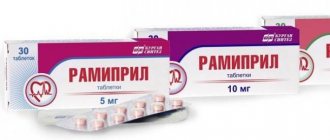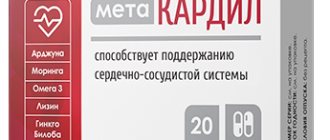Arterial pressure
Blood pressure (BP) is the pressure that blood exerts on the walls of blood vessels. This is one of the vital health indicators. It is measured in millimeters of mercury (mmHg) and is interpreted based on two values:
- systolic pressure (“top”): the pressure of the blood when your heart contracts and pushes blood into the arteries;
- diastolic pressure (“lower”) is the blood pressure at the moment the heart muscle relaxes between two contractions.
The ratio of these indicators is usually considered in the context of norm, pathology or temporary disorder.
Blood pressure levels are individual for each age and gender. But the World Health Organization scale is considered to be a general guideline for assessing blood pressure.
Disturbances in the functioning of the circulatory system, and with it cardiac activity and blood pressure, can occur in humans regardless of gender and age. However, you should understand in which case high blood pressure is associated with the development of the disease, and in which cases jumps in blood pressure occur situationally (emotional shock, alcohol and tobacco use, nervous tension, active physical activity).
In a healthy person, an increase in normal values by 10–15 mmHg is acceptable with age. If an age-related increase in pressure is indicated by a sharp jump, frequent attacks of hypertension, then this is not associated with age, but often with the development of a disease of the cardiovascular system. Ignoring such symptoms and waiting for age-related stabilization of blood pressure to occur is dangerous.
What influences the appearance of hypertension?
Here's what contributes to the development of high blood pressure:
- Age . Typically, those at risk for developing hypertension include men over 55 years of age and women over 65 years of age. But the disease is also common among young people.
- Heredity . Predisposition to high blood pressure is often due to genetics. If your family had a similar problem, you should take care of this health factor now. You can learn about the risk of developing arterial hypertension and other cardiovascular diseases, and receive recommendations for prevention and treatment using the Atlas Genetic Test.
What can you learn from a genetic test?
- Race. People of African descent are more likely to develop hypertension than other races. In black people, the disease often develops at a young age and has complications.
- Lack of physical activity . Typically, people who do not exercise have a higher heart rate. And the higher the heart rate, the more actively the heart must work and the greater the pressure on the arteries. Lack of physical activity also increases the risk of being overweight.
- Overweight. The more a person weighs, the more blood is needed to supply tissues with oxygen and nutrients. Due to the increased volume of blood flow in the blood vessels, the pressure on the artery walls also increases. A balanced diet rich in fiber, vegetables and fruits will help keep your weight and blood pressure normal. You can receive recommendations for individual nutrition thanks to the Atlas genetic test.
- Smoking. Tobacco use not only temporarily increases blood pressure, but can also damage the lining of artery walls due to the chemicals it contains. And as a result, it can lead to narrowing of the arteries and increase the risk of heart disease.
- High salt (sodium) content in the diet. Excessive consumption of salty foods retains fluid in the body, and this, in turn, increases blood pressure.
High sodium levels are found in processed foods, such as: - bread (≈ 250 mg/100 g), - bacon (≈ 1500 mg/100 g), - cheese balls or popcorn (≈ 1500 mg/100 g), - soy sauce (≈ 7000 - 21,900 mg/100 g), - bouillon cubes (≈ 20,000 mg/100 g). - Insufficient potassium content in the diet. Potassium helps balance the amount of sodium in the body and affects heart health. If you don't get enough potassium or lose too much due to dehydration or other illnesses, sodium can build up in your blood.
Large amounts of potassium are found in various foods: - beans and peas (≈ 1,300 mg/100 g), - nuts (≈ 600 mg/100 g), - vegetables such as spinach, cabbage and parsley (≈ 550 mg/100 g) , - fruits such as bananas, papaya and dates (≈ 300 mg/100 g).Heat processing reduces the amount of potassium in many foods.
- Excessive sugar consumption. Research suggests that added sugars, including fructose, may increase blood pressure and increase heart rate. WHO recommends reducing daily intake of free sugars to less than 10% of total energy intake. That's 200 calories, or about 12 teaspoons (about 60 g) based on a 2,000-calorie daily diet. Examples of added sugars and their calorie content: - 1 tablespoon of tomato ketchup = 12 kcal of added sugars - 1 jar of flavored yogurt (28 g) = 72 kcal of added sugars - 1 45 g chocolate bar = 74 kcal of added sugars - 1 can of soda (330 ml) = 126 kcal of added sugars - 1 piece of chocolate cake (100-150 g) = 196 kcal of added sugars.
- Alcohol. Over time, drinking too much alcohol can harm your heart. Drinking more than one alcoholic drink per day for women and more than two alcoholic drinks per day for men negatively affects blood pressure.
- Stress. High levels of stress can lead to a temporary increase in blood pressure. And habits associated with stressful conditions - overeating, drinking alcohol and smoking - aggravate the situation.
- Chronic diseases. Some chronic conditions can also increase the risk of hypertension: kidney disease, diabetes, and sleep apnea.
- Pregnancy. Many women experience increased blood pressure during pregnancy.
Hypertension is more common in adults, but children are also at risk. High blood pressure in children is caused by kidney or heart problems, poor diet and lack of exercise.
Causes of high blood pressure
Depending on which of the two pressure indicators is elevated (upper or lower), it is customary to consider the picture of the state of health.
Common causes of high blood pressure include:
- being in a state of prolonged, chronic stress and nervous tension;
- short-term bursts of emotional or mental activity, since adrenaline (stress hormone) speeds up the heart, affecting the tone of blood vessels;
- a high concentration of sodium and calcium in the blood, at which frequent spasms of the smooth muscles from which the entire vascular system is “woven” occurs.
- high cholesterol, the formation and accumulation of atherosclerotic plaques on the walls of blood vessels, which over time leads to a narrowing of the lumen of blood vessels, which impairs blood flow. In this case, the heart is forced to work harder to move blood through the vessels, which causes the development of chronic hypertension.
- regular use of alcohol, tobacco, smoking mixtures, psychotropic substances. Under the influence of the chemical composition of which fluctuations in vascular tone occur, the functioning of the kidneys and other body systems is disrupted.
- course or frequent use of medications: oral contraceptives, appetite suppressants, glucocorticoids.
- diabetes mellitus, kidney and liver diseases, thyroid diseases
- excess weight and inactive lifestyle, asthenia
- blood thickening and dehydration, which make it difficult for the cardiovascular system to pump blood
- violation of diet, consumption of mineral salts, smoked spicy foods on a regular basis
- diseases of the spine, in which pinched nerve roots occur, increased muscle tone, which lead to impaired blood supply to blood vessels.
- heredity
However, looking at the readings of the measuring instruments, one should distinguish between high upper pressure and high lower pressure. Because both the risks of health complications and the choice of therapy depend on this.
High top pressure
When the upper (systal) pressure increases, aching headaches appear, with pulsation occurring. There may be pressure on the eyeballs, a feeling of swelling of the face.
The symptoms of high upper pressure are similar to intracranial pressure. Which develops as a consequence of impaired circulation of cerebrospinal fluid.
- if the upper pressure is increased, an irregular heart rhythm (arrhythmia) and aching chest pain may occur. Some people, if they have such symptoms, may panic and attribute their occurrence to heart problems.
- when the upper pressure increases to 150 mm Hg. Art. an adult may develop a hypertensive crisis, which causes pathological changes in the coronary arteries and heart muscles.
- angina pectoris develops, the left ventricle enlarges and cardiac output decreases, therefore heart failure develops, and with it the risks of developing myocardial infarction arise.
High bottom pressure
Lower pressure means the pressure in the blood vessels during maximum relaxation of the heart, before a new contraction. An increase in this indicator means that fluid is poorly removed from the body. Lower pressure is also called “renal pressure”. The kidneys, passing blood through themselves, act as a filter, regulate the water-salt balance of the body and remove toxins from the blood along with urine. If the lower pressure indicator fails, then you should start looking for problems in the kidneys, which for some reason cannot cope with their work.
Genetic factors in the development of hypertension
Many genetic studies have revealed the stability of the renin-angiotensin-aldosterone system (RAAS). This is the human hormonal system that regulates blood pressure, blood volume, and the balance of fluids and salts in the body. Changes in this system may contribute to the development of hypertension.
But today there is data that shows a predisposition to the development of hypertension much more accurately and up-to-date. For example, genome-wide associations are worth considering. The NOS3 gene synthesizes nitric oxide and relaxes the walls of blood vessels, APOE is a cholesterol transporter, specific polymorphisms in the ADRB1 gene affect resting heart rate and may be associated with heart failure.
Symptoms of high blood pressure
There are no specific symptoms typical for hypertension. Therefore, sometimes, seemingly without apparent reason or alarm bells, strokes and heart attacks occur even in young people. And those symptoms that may indicate high blood pressure are ignored.
Among the common ones:
- headache in the temporal or occipital part of the head
- dizziness
- weakness and tremors
- nausea
- dyspnea
- blurred vision, flashing spots before the eyes
- tachycardia
- swelling (in case of increased lower pressure)
On a note:
- Hypertension is a multifactorial disease that manifests itself as a persistent increase in blood pressure and depends on genetic predisposition and lifestyle.
- Men over 55 years of age and women over 65 years of age are at risk for the disease. However, the disease is also common among young people and children.
- Hypertension is a “silent killer” because it is often asymptomatic. To find out the presence of the disease, you need to regularly monitor your blood pressure levels and consult a specialist. Genetic testing will help determine predisposition and prevent the development of the disease.
- If your blood pressure suddenly increases, it is important to call a doctor or take medications recommended by a specialist. Self-medication with folk remedies for this condition is ineffective and even dangerous.
- Risk factors for high blood pressure: age, heredity, lack of physical activity, excess weight, smoking, alcohol, excess salt and lack of potassium, stress and chronic diseases.
- Hypertension negatively affects all areas of a person’s life. A hypotensive person must take medications regularly, limit diet and exercise. Headaches, cerebrovascular accidents, edema, increased risk of developing atherosclerosis, heart and kidney diseases are companions of arterial hypertension.
- Hypertension cannot be cured, but symptoms can be controlled with medications and its progression can be prevented with a balanced diet, regular exercise and stress reduction.
Sources:
- Oparil S. et al., Hypertension Review
- Williams B. et al.,2018 ESC/ESH Guidelines for the management of arterial hypertension: The Task Force for the management of arterial hypertension of the European Society of Cardiology (ESC) and the European Society of Hypertension (ESH)
- Umemura S. et al.,The Japanese Society of Hypertension Guidelines for the Management of Hypertension
- Curfman G. et al., Treatment and Control of Hypertension in 2020: The Need for Substantial Improvement
- High blood pressure (hypertension)
- High blood pressure//Prevention//Causes//Diagnosis//Treatment
How to reduce high blood pressure at home
High blood pressure is a very serious symptom. Therefore, any therapy should be prescribed strictly under supervision and on the recommendation of a specialist!
However, regular blood pressure medications should be in your home medicine cabinet, especially if there are real prerequisites.
- If the increase in pressure is situational in nature and caused by emotional or nervous shock. First of all, you should balance your breathing, find ways to calm down and relax as much as possible. Among the medications you can use: sedatives of plant origin, for example: novo-passit, persen, valerian tab, motherwort extarct tablet and others.
- To reduce blood pressure, diuretics can be used as part of complex therapy or as an independent remedy: Their selection and prescription, as well as the choice of dosage, is carried out by the doctor.
- If hypertension is an established chronic disease and another attack occurs, it is important to take as quickly as possible: Emergency drug Captopril 25 mg sublingually 0.5-1 tablet, and consult a doctor as soon as possible.
Preventing high blood pressure
Preventing high blood pressure is an important measure to prevent dangerous conditions and negative health consequences. Paying close attention to your body will protect it from dangerous diseases of the cardiovascular system. Considering that any disease can be aggravated by unfavorable heredity, it is important to approach the issue of preventing systemic diseases with particular care.
Primary prevention of high blood pressure
Primary prevention of hypertension involves preventive measures against blood pressure disorders in principle, exclusion of potential risk factors from lifestyle: bad habits, excessive physical activity, uncontrolled diet and diet.
Secondary prevention of high blood pressure
Secondary prevention means control of an existing disease and strengthening the stage of remission of hypertension, eliminating risk factors for the development of coronary heart disease, heart attack, and stroke. In addition to lifestyle correction measures, it also includes medications, vitamin health support, and physical therapy. Due to the great capabilities of modern medical equipment production, physiotherapy can be carried out at home.
The concept of mental hygiene plays an important role in the prevention of high blood pressure. Which implies reducing psychological and emotional tension, minimizing stressful situations and the ability to respond correctly to them.
Be healthy!
Still have questions? Ask them to us in the comments, we will definitely answer!
How to lower blood pressure and cure hypertension?
Hypertension is a chronic cardiovascular disease. It cannot be cured completely, but symptoms can only be relieved with medication. Hypertensive patients are dependent on medications, have limited diet and exercise, and are always at risk of developing new diseases.
To maintain quality of life, it is important to minimize risks before the disease actively develops. This can be done using the Atlas genetic test, which includes information about predisposition to the disease, as well as recommendations for prevention.
To treat high blood pressure, you need to consult a specialist. But below you will find tips for preventing and controlling hypertension.
- Reduce salt intake (no more than 1.5 g per day)
- Limit consumption of foods high in saturated fats and trans fats
- Avoid or reduce consumption of sugar, alcohol, coffee and tobacco
- Increase the amount of fruits and vegetables in your diet
- Exercise regularly
- Reduce and control stress conditions
- Measure blood pressure regularly
- Treat high blood pressure and other conditions with the help of a specialist.
In case of a hypertensive crisis, you must call a doctor and not self-medicate. Traditional methods will also not be beneficial. There are many medications available to lower blood pressure. Depending on the symptoms and characteristics of the body, doctors recommend:
- ACE inhibitors
- Angiotensin II receptor blockers
- Calcium channel blockers
- Diuretics
- Alpha blockers
- Beta blockers
Most people need to take more than one type of medicine to better control their blood pressure.










